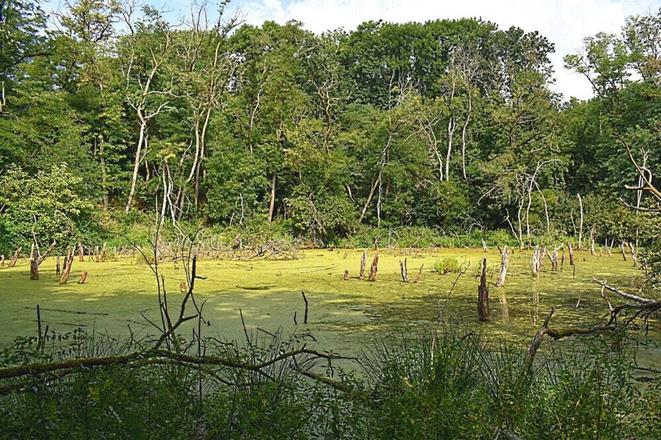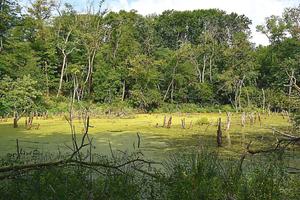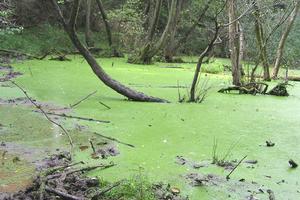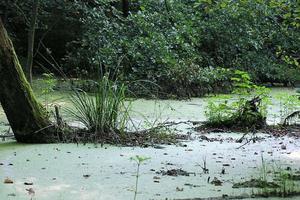The appearance of the lake depends on precipitation. Most often it is flooded, the trunks of old trees sticking out of the water. But in some images it looks like a dried-up crater. From a bird's eye view, it resembles an eye.
A helping hand in the heart of Europe offers a travel guide of Slovakia.
The area, untouched by human intervention, is located in an inaccessible part of the forested area in the south of Slovakia, on the hill between the villages of Horné Semerovce, Hokovce, Dudince, Santovka and Demandice.
How and when the lake was formed is unknown, with mentions dating to the last century. However, locals know little about it.
Endangered species of peat moss found
When you see the lake, it is as if time has stood still. Kráľovičova Slatina, as it is named, is one of over 180 protected areas in Slovakia and under the administration of the State Nature Conservancy.
"In 2000 the territory was declared in an area of 0.2632 hectares," says dendrologist Radoslav Požgaj from the Administration of the Protected Landscape Area of Ponitrie.
According to the map, the lake has a diameter of approximately 50 to 60 metres. It has no inflow or outflow and it is about nine metres deep.
The expert says that it is impossible to unequivocally state what life is like here. Due to the influence of weather, drought, rains, the shape of the area changes very frequently.
However, compared to 1970s data, the total area of the water surface has decreased. Also, in 2004 an endangered species of sphagnum was found.
A magical place
Milan Ukrop, a native of the nearby village of Demandice, walked through the untouched part of the forest. "The impression you get from visiting this place is magical. The silence and the shape of the place absorb you."
He noticed the lake a long time ago on maps with old military locations. According to him, the lake conceals much more than a valuable biotope.
Ukrop is a former university scientific and pedagogical worker. In retirement, he devotes himself to the history of his native region.
He does not know for certain how the lake was formed. "The place does not show any signs of human activity, for example the mining of mineral raw materials. It is actually a pit with a circumference of approximately 310 metres.'
An aerial photograph shows that it has an almost perfect circular shape.
He thinks that it may be the result of an impact from a celestial body. However, it lacks the circular crown that is characteristic of these structures. He also does not rule out some geothermal activity or earthquake.
Ukrop says that now is the best time to visit the unusual lake, because the harvest is over.
"In the future, it's up to the experts to give us an answer about the origin of the lake," he adds.
©My Levice
Spectacular Slovakia travel guides
A helping hand in the heart of Europe thanks to the Slovakia travel guide with more than 1,000 photos and hundreds of tourist spots.
Our detailed travel guide to the Tatras introduces you to the whole region around the Tatra mountains, including attractions on the Polish side.
Lost in Bratislava? It's impossible with our City Guide!
Selected travel articles, podcasts, travellers' needs as well as other guides dedicated to Nitra, Trenčín Region, Trnava Region and Žilina Region.


 (source: Milan Ukrop)
(source: Milan Ukrop)


